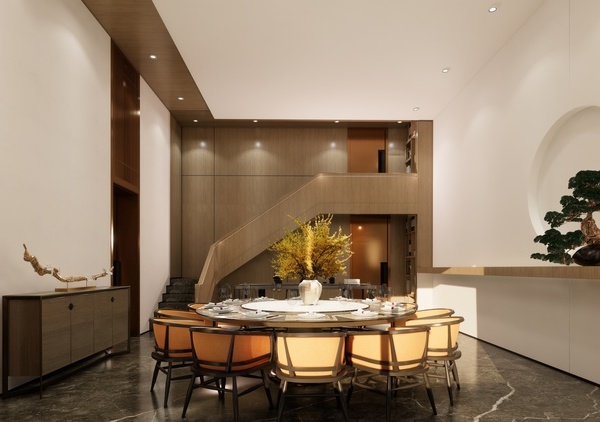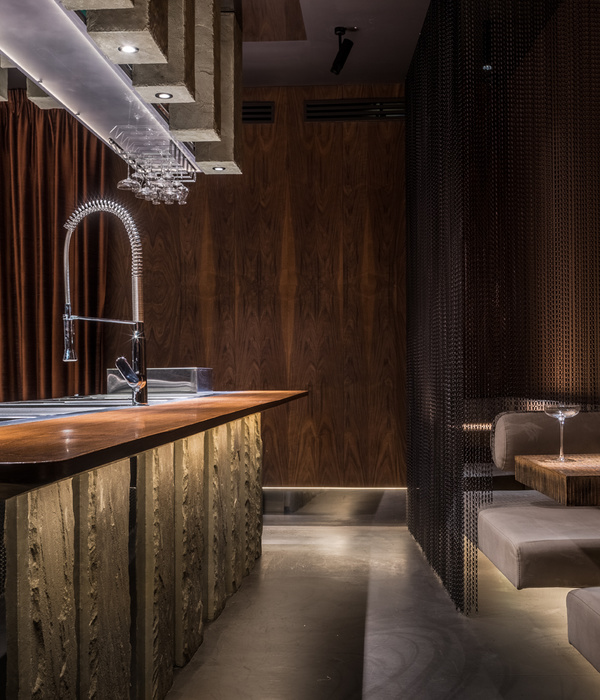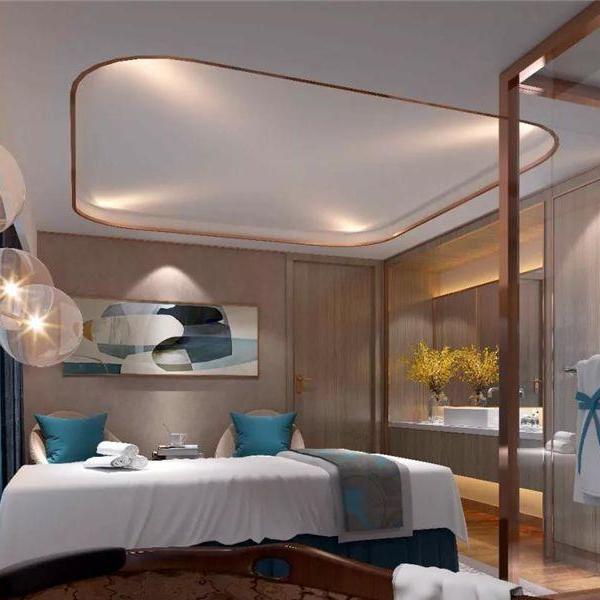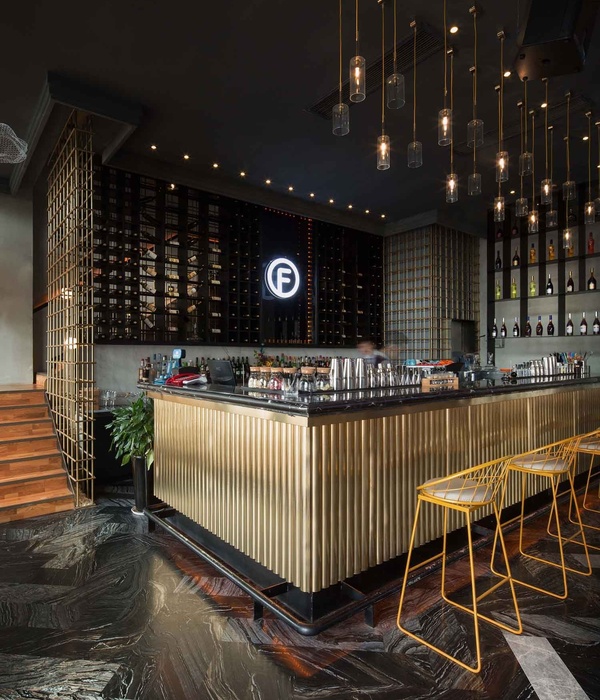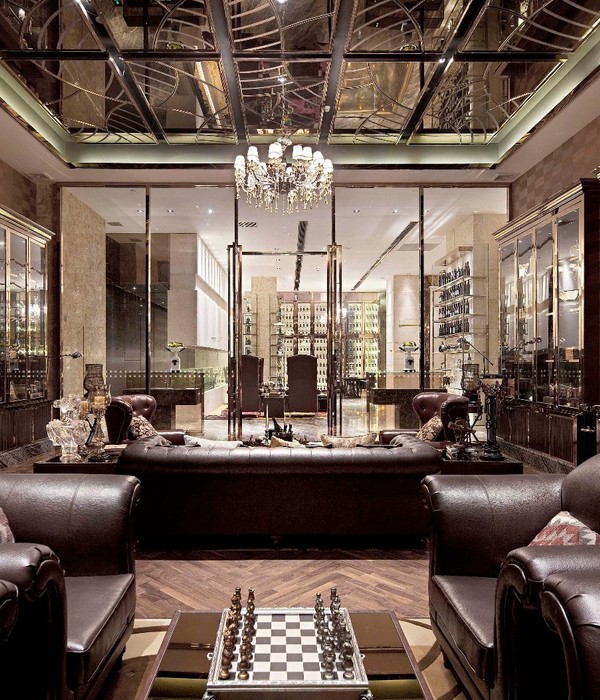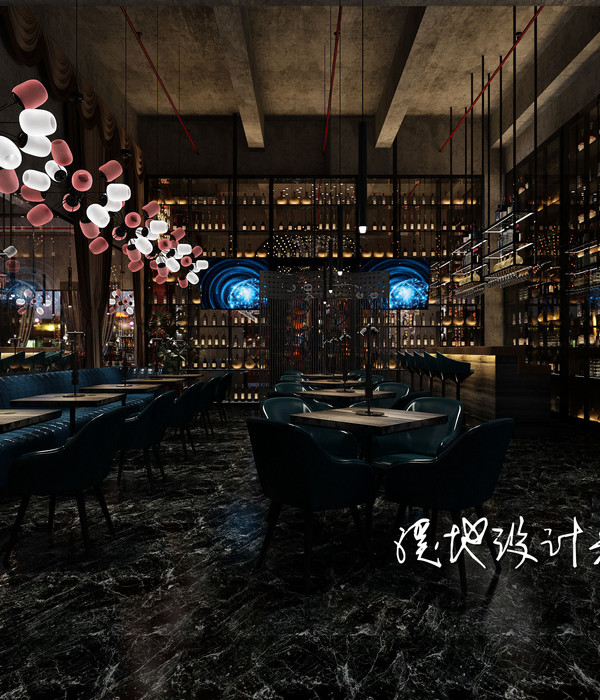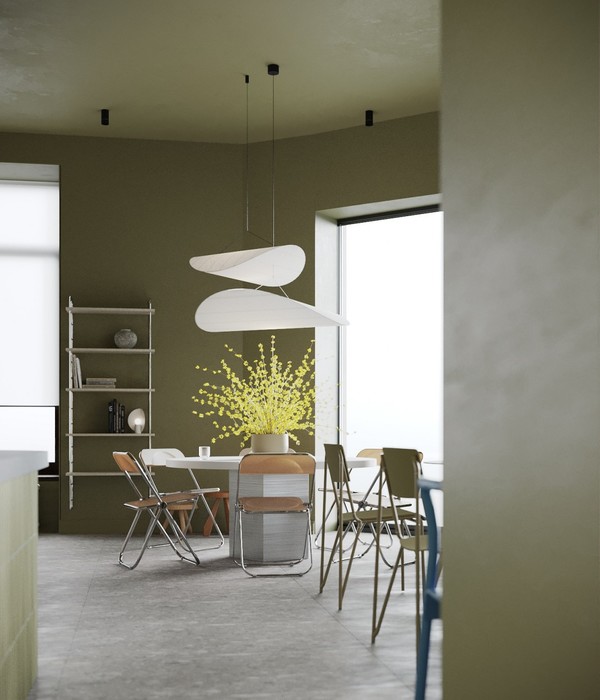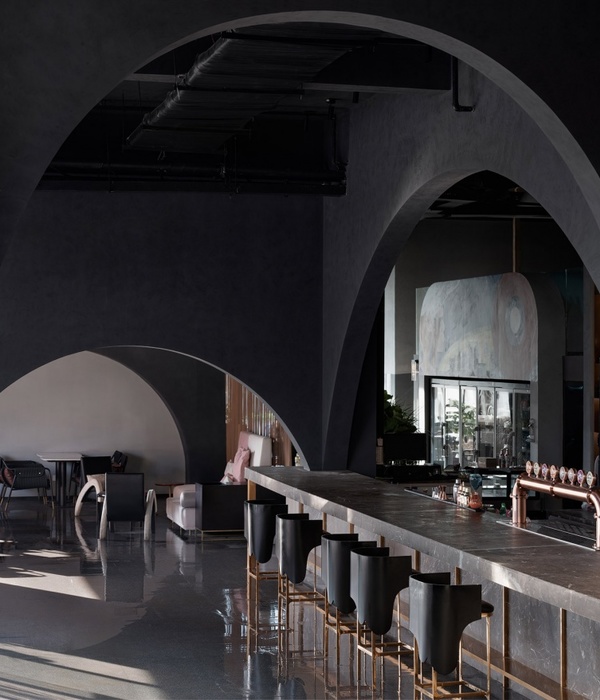“我们相信,真正的建筑将通过最基本的语汇在人们脑海中留下不可磨灭的印记。” “We convinced that real architecture will leaves indelible trace in our minds by only elementary architectural action.”
今天,商业空间的建筑设计旨在促进与用户之间的视觉交流,作为观看、拍摄与社交活动的媒介吸引人们进入空间。尤其是餐厅和咖啡馆一类的项目,经常会借用附加的建筑语言来吸引顾客。作为清迈的建筑师,在一个“网红”驱动商业的城市中,是否能够通过设计来质疑这种现状?本案中,建筑师希望通过设计重新探讨职业本质。
Today, architectural design for commercial spaces is expected and driven to try to communicate visually with users, or as a tool to attract people to spaces through visualization, photography, and social statement inevitably. In particular, restaurant and café type programs that often borrow the other language of architecture to attract customers. But as a design worker in Chiang Mai, a city in which such businesses are driven by an architecture that requires instragramable, is it necessary to question the situation through the design work? At least in order not to overlook the true essence of our profession.
▼建筑立面,the facade ©Rungkit Charoenwat
“给我庇护所”是一个集咖啡厅、餐厅、办公室和工作坊于一体的商业区。设计将清迈拉达那哥欣酒店停车场的旧仓库改造成一个多功能区,在符合停车场规范的基础上,对空间进行了探索与翻新。
The gimme shelter is a commercial area that consists of a cafe, restaurant, office and workshop area. That replaced the old warehouse in the parking lot of the Chiang Mai Rattanakosin Hotel to become a multi-function area, architect initially wanted a warehouse area in the city with criteria of car park and began to develop more space utilization when exploring and renovating the building.
▼立面保留原有建筑元素,renovation of the old warehouse ©Rungkit Charoenwat
▼立面细部,details of facade ©Rungkit Charoenwat
项目的主要空间为咖啡店和餐馆,办公室、工作坊和花园隐藏在现有建筑围合的后部空间中。改造旨在延续原仓库的设计语言,以简单的平面划分空间,并将光线引入室内。
The main program is ranked first by cafes and restaurants. The design office, workshop and garden are hidden in a back space between surrounding building. Mentality of renovated using the language of the original warehouse combined with simply plane for separating the space and bringing in light into the building.
▼入口,entrance ©Rungkit Charoenwat
▼餐厅空间,view of the dining space ©Rungkit Charoenwat
▼开放吧台区,open bar area ©Rungkit Charoenwat
▼吧台细部,details of the bar ©Rungkit Charoenwat
▼室内家具,furnitures ©Rungkit Charoenwat
▼咖啡厅,cafe ©Rungkit Charoenwat
设计采用常见的工业材料,营造出新的商业氛围。综上,设计的成果全部基于建筑本质,而没有任何附加修饰,这种提升建筑的方法能够将每一项改造的痕迹细致地保留下来。
It uses industrial materials that are commonly available but are adapted to the atmosphere. We will find that the surplus is not borrowed from anything other than the essence of the original area’s solution. It is a method for improving the building that has been chosen to collect traces from things that are fit.
▼天窗,the skylight ©Rungkit Charoenwat
▼材质细部,details ©Rungkit Charoenwat
除了对建筑语言的探讨,设计还使整个区域变得更加开放宽敞。为了改善现状,设计插入了一个隐藏空间,将不同群体的人们从单一功能的“顾客”变成空间的使用者。不仅酒吧的准备区对外开放,餐厅的厨房和用餐区也通过别出心裁的设计语言形成了视觉互动,使用餐的人们和工作人员间能够发生平等的对话。
In addition to the issue of architectural language that architect intended to make the area open and wide. and to solve the original problem of the building, there is also the insertion of a Hidden Program that people in various groups will become “Space users” are not the only “customers”. The bar area is open to prepare meals. In order to see the activities of the food from the kitchen to the customers with the intention of making the restaurant an open space People are able to talk and have an equal level of interaction both at the dining table and with the restaurant staff. It’s the design language that was intentionally inserted into this restaurant space.
▼开放工作坊,open workshop ©Rungkit Charoenwat
此外,项目还设置了一个小型讨论区,以促进人们在此开展有关城市发展的社会和政治层面的对话。讨论区面向公众和学生开放,没有时间和正式学术讨论的限制。多样的活动发生在商店后方的红木果树间,使附近居民也能参与其中。
And there is also a small discussion area. that draws conversations throughout the design urban development, social and political dimension that welcomes both the general public and students can come and talk without referring to the chronological and formal academic discussions. These activities are interspersed in the mahogany orchards separated by the space behind the shop, without separating the users of the area.
▼讨论区,discussion area ©Rungkit Charoenwat
建筑师对项目进行了回顾,他们相信,真正的建筑通过简单的改造就能够在人们脑海中留下不可磨灭的记忆。本案为商业空间设计提供了新的思路,如果可以期待更多,城市中的建筑是不是能够借由不同的个体创造出独一无二的记忆?项目创造出与人对等的商业空间,实现“多维社交”,通过人与人之间的小型对话创造了记忆。
After practicing the profession for a while, we convinced that real architecture will leaves indelible trace in our minds by only elementary architectural action. It also drives the train of thought between architectural expression. And if we can expect more, we hope that our city will have an architecture that is related to the memories of diverse people. as an architect Is it possible to design a commercial space that opens the door to receive an equal number of people? Create social overlapping dimensions. and leave some traces of memory in the quality of small, person-to-person conversations.
▼夜景,night view ©Rungkit Charoenwat
▼轴测剖面,isometric section ©Housescape Design Lab
{{item.text_origin}}

